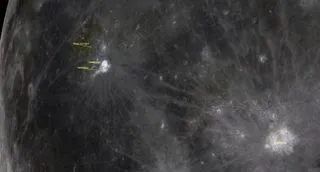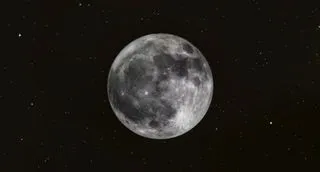As the calendar turns to July, NASA is gearing up to share its latest rundown on what to look out for in the night sky. Ranging from planetary alignments to celestial bodies and stunning star clusters, there’s plenty of action to enjoy in the coming weeks.
One of the highlights of the month is the presence of Saturn, which will rise around midnight and climb high in the south by sunrise. Mars will follow close behind, making for a dynamic duo in the southern sky. Jupiter will also be making an appearance, joining the pair in the early morning hours. On July 3, before sunrise, the crescent moon will add its glow to the mix, creating a beautiful trio of celestial bodies in the eastern skies.
As the moon continues its orbit, it will regroup with Jupiter and Mars towards the end of the month, forming a tighter gathering of the three bodies along with the bright stars of the constellation Taurus. For those with an unobstructed view of the western horizon, an added treat awaits on the evenings of July 7 and 8. Look for Mercury shining brightly, low in the sky and close to a slim crescent moon, about 30-45 minutes after sunset.
On July 13, take a moment to appreciate the moon’s proximity to the bright bluish-white star Spica in the first few hours after dark. To the southwest, this celestial duo will be a beautiful sight to behold. Astronomy enthusiasts, rejoice! With the right pair of binoculars, you can also spot Uranus, which will be appearing close to Mars, visible to the naked eye, in the middle of the month.

NASA Prepares Stargazers for July’s Celestial Delights
As we gaze up at the night sky, our attention is drawn to the constellation Scorpius, a prominent feature of the summer sky. At the tip of the scorpion’s tail lies a couple of star clusters, M7 and M6, also known as Ptolemy’s Cluster and the Butterfly Cluster respectively. These stunning clusters are located about 5 degrees east of the bright stars that mark the “stinger” end of the scorpion’s tail, making them easy to locate on a clear night.
With the aid of NASA’s latest video and some handy astronomy apps, you’ll be well-equipped to track down these celestial wonders in the coming weeks. Whether you’re a seasoned stargazer or just starting out, July promises to be a month filled with memorable moments under the stars. So, grab a pair of binoculars, find a clear spot, and get ready to marvel at the night sky’s many delights.








































